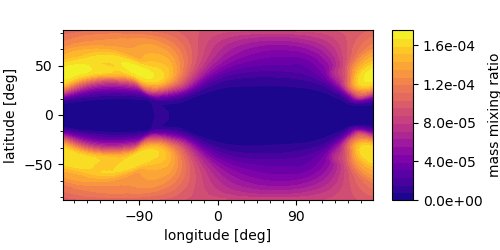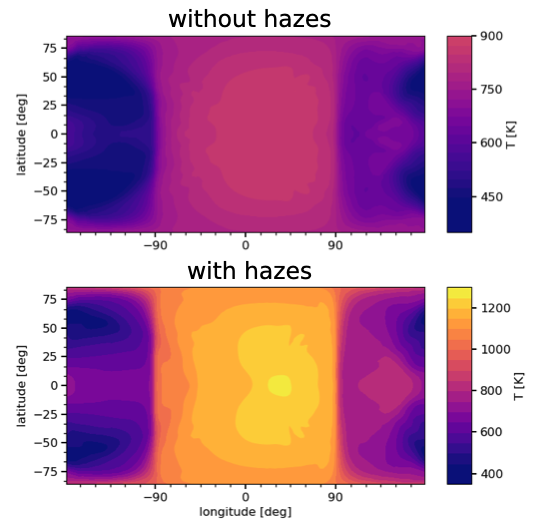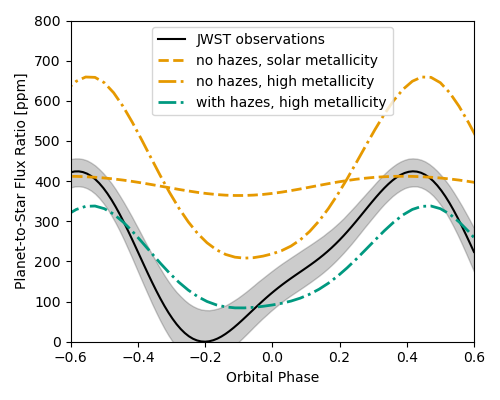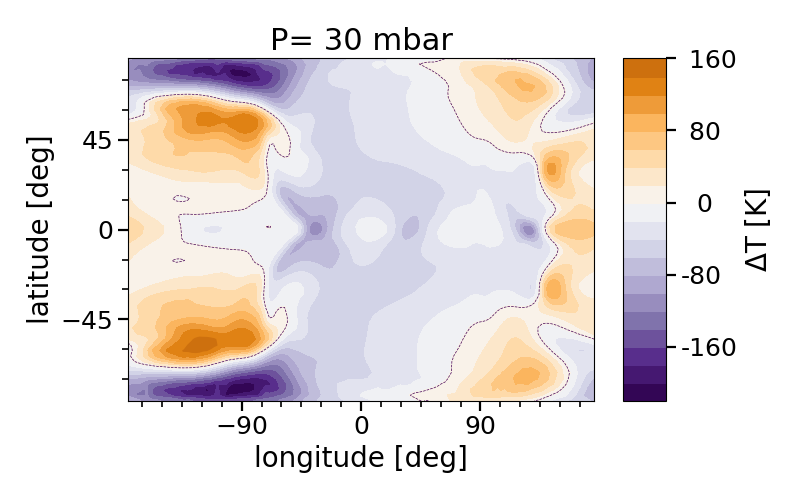Maria Steinrueck
I am a researcher studying the atmospheres of exoplanets. Currently, I am a 51 Pegasi b Fellow at the University of Chicago.
I am a researcher studying the atmospheres of exoplanets. Currently, I am a 51 Pegasi b Fellow at the University of Chicago.
My research focuses on studying the atmospheres of exoplanets with three-dimensional numerical simulations (so-called General Circulation Models or GCMs). I concentrate on close-in gas giants, such as hot Jupiters, warm Neptunes and sub-Neptunes. These planets are tidally locked, meaning that one side of the planet permanently faces the star. This creates strong day-night temperature contrasts which drive a vigorous atmospheric circulation. I am interested in examining how this circulation shapes chemical processes, such as disequilibrium chemistry, cloud or haze formation, as well as in how these processes in turn influence the atmospheric circulation and radiative transfer.

Haze mass mixing ratio at the 40 µbar level for small haze particles (see Fig. 1 and 4 in Steinrueck et al., 2021)
I developed the first model for photochemical hazes in a 3D general circulation model of a hot Jupiter. Using this model, I demonstrated that small photochemical hazes are more concentrated at nightside and morning terminator, contrary to previous predictions, and explored the implications for transmission spectra.
Adding heating and cooling to the my haze model, I found that heating and cooling by hazes dramatically changes temperature structure, atmospheric circulation and emission spectra of hot Jupiters. Depending on the optical properties, the equatorial jet, the most prominent atmospheric circulation feature of hot Jupiters, can either accelerate or slow down. The day-night temperature contrast, which can be measured through phase curves, contrast increases strongly.
Read more:
Steinrueck et al. (2023), ApJ, 951, 117

Photochemical hazes can strongly increase the day-night temperature contrast (here shown at 1 µbar).

Highly scattering hazes and a high metallicity are required to explain the phase curve of the benchmark sub-Neptune GJ 1214b.
As part of the team observing the first thermal phase curve of a sub-Neptune, I used GCMs to model how heating and cooling by hazes affects phase curves and emission spectra of the sub-Neptune GJ 1214b, known to have a strong haze layer based on its flat transmission spectrum. We found that a strong haze layer with highly scattering hazes and a high metallicity were necessary to explain the low dayside emission and large day-night temperature differences.
Read more:
Kempton, Bean, Zhang, Steinrueck et al. (2023), Nature, 620, 67-71 | free arXiv version
In Steinrueck et al. (2019), I examined how disequilibrium abundances of methane, carbon monoxide and water affect 3D temperature structure and model-predicted phase curves of hot Jupiter HD 189733b. I found temperature changes of up to 10%, a large effect on the phase curve at wavelengths with strong methane absorption, such as the Spitzer 3.6 micron band, and little change in the Spitzer 4.5 micron band.
Read more:
Steinrueck et al. (2019), ApJ, 880, 14

Temperature difference compared to equilibrium chemistry in one of the simulations (see Fig. 4 in Steinrueck et al., 2019)
You can find a PDF of my CV here.
msteinrueck (at) uchicago (dot) edu
Maria Steinrueck
The University of Chicago
Department of Astronomy and Astrophysics
William Eckhardt Research Center
5640 South Ellis Avenue
Chicago, IL 60637
United States